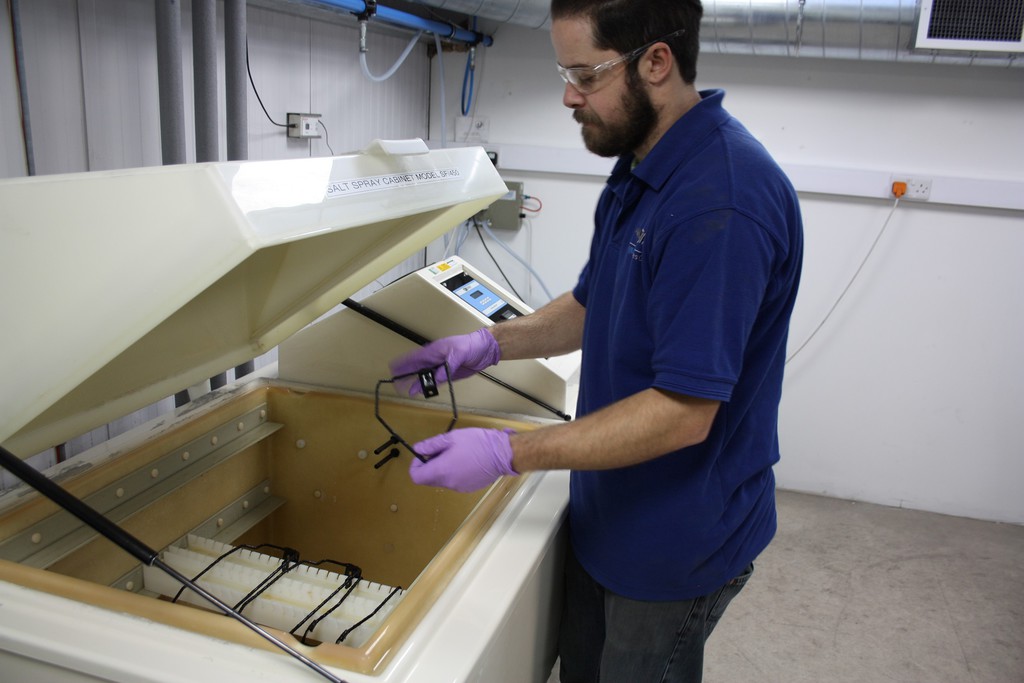

|
Edward Lowton
Editor |


|
| Home> | Production Engineering | >Quality and tolerance testing | >Salt spray testing keeps a check on corrosion |
Salt spray testing keeps a check on corrosion
27 February 2019
William Hughes has added salt spray testing to its quality control procedures.

Salt spray or salt fog testing exposes springs and other components to a saline fog environment in order to ascertain the corrosion resistance of the material of which they’re made or the surface coating thereof. A controlled saline situation will show how long it takes for a component to accede to rust or other oxides, if indeed it succumbs at all.
Equipment required for the salt spray chamber comprises the holding tank with its salt solution of between 4 and 6% pH and the salt spray cabinet itself where the salt water solution is atomised using pressurised air. Samples are exposed to this corrosive saline fog for the requisite amount of time, which can be days or weeks depending on the standard to be achieved. Regular daily tests ensure that temperature and the specific gravity of the salt solution are maintained at a level consistent with ASTM B117, an internationally recognised salt spray standard.
The salt spray test is generally applied to items coated in, for example, Delta-tone or KTL-Black. These coatings, used in the aerospace and automotive industries, typically are required to meet specifications which include a number of hours of salt spray testing. The requirements that William Hughes meet range from 48 to over 600h of salt spray testing.
- Bulgaria success
- High performance springs for aerospace applications
- Springs: Sole supplier status
- Metrology services for high precision manufacturing
- Wire service
- Salt spray testing keeps check on corrosion
- William Hughes forecast to cut annual energy costs by £35,000
- Springs: Coatings and finishes
- William Hughes expands aerospace quality programme
- Strong & flexible wire assembly

















